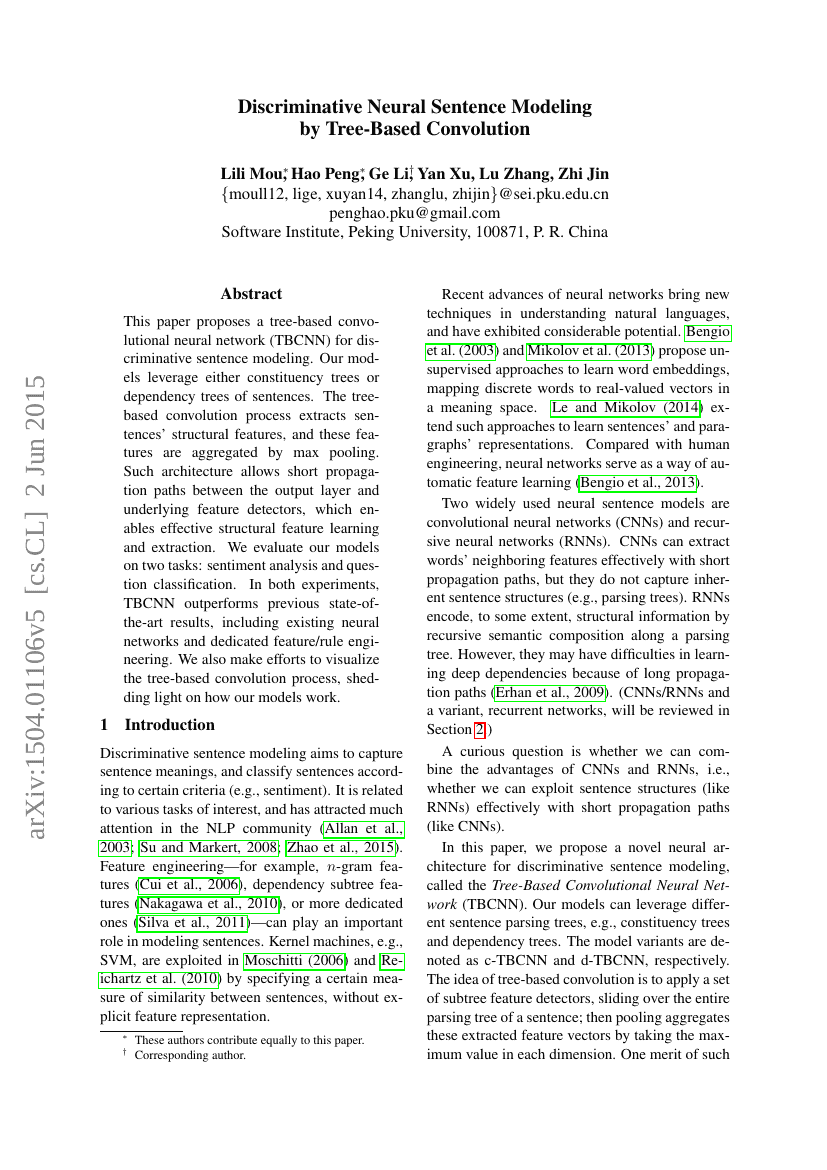Command Palette
Search for a command to run...
Lili Mou; Hao Peng; Ge Li; Yan Xu; Lu Zhang; Zhi Jin

Abstract
This paper proposes a tree-based convolutional neural network (TBCNN) for discriminative sentence modeling. Our models leverage either constituency trees or dependency trees of sentences. The tree-based convolution process extracts sentences' structural features, and these features are aggregated by max pooling. Such architecture allows short propagation paths between the output layer and underlying feature detectors, which enables effective structural feature learning and extraction. We evaluate our models on two tasks: sentiment analysis and question classification. In both experiments, TBCNN outperforms previous state-of-the-art results, including existing neural networks and dedicated feature/rule engineering. We also make efforts to visualize the tree-based convolution process, shedding light on how our models work.
Benchmarks
| Benchmark | Methodology | Metrics |
|---|---|---|
| text-classification-on-trec-6 | TBCNN | Error: 4 |
Build AI with AI
From idea to launch — accelerate your AI development with free AI co-coding, out-of-the-box environment and best price of GPUs.